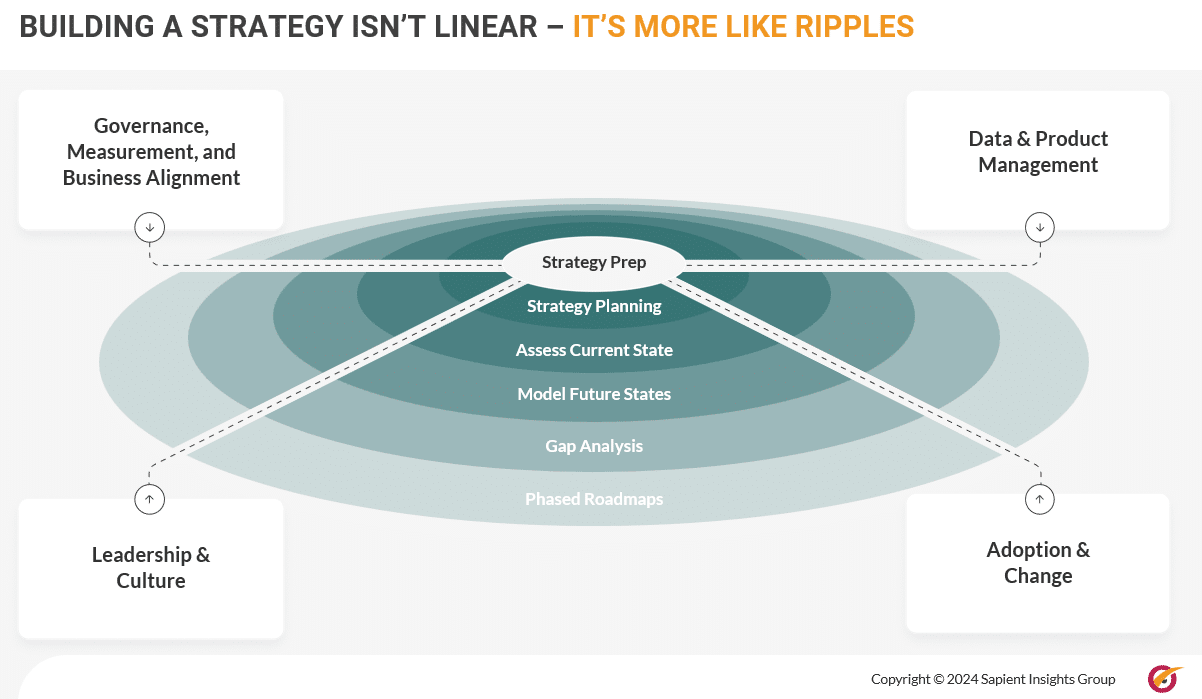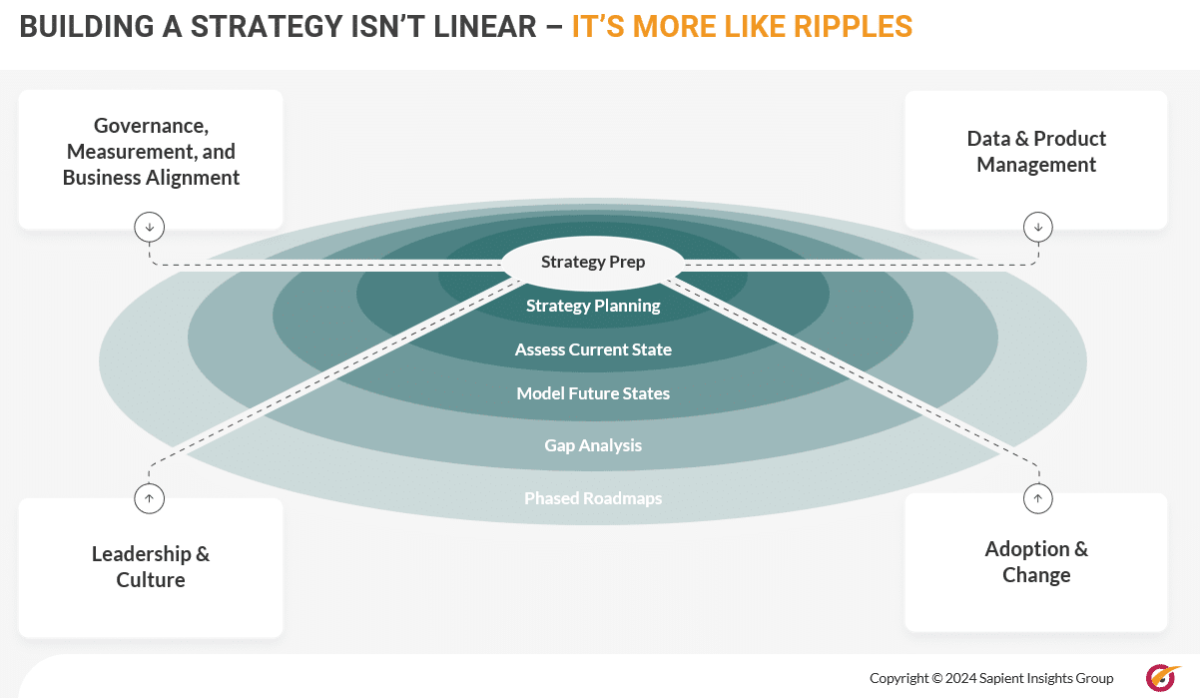In just a few weeks, many of us will gather in Las Vegas to learn about the latest innovations in HR tech. While I’ve attended the HR Technology Conference for more years than I care to admit, I still get overwhelmed. Walking the conference exhibit is like shopping in a technology superstore; the product and service options are mindboggling.
So, the eve of HR Tech is the perfect time to get back on my soapbox and stress the importance of an adaptable HR systems strategy.
Our research shows that, on average, companies now have 21 HR-related applications, up from eight in 2019. This huge jump results from several factors, including an increase in available options and the growing role of technology in employees’ day-to-day work.
But as companies continue to add new HR solutions and services to their tech portfolios, too many are making decisions without a detailed plan. Last year, only 53% of our survey respondents said their companies had an HR systems strategy, and of that group, only 42% said they regularly updated their strategy. This is a problem, given the pace of technology and business change. An HR systems strategy created in 2020 is likely of minimal value today when it comes to planning future purchases and ensuring alignment with long-term business goals.
HR systems strategy: Never once and done
Many leaders view an HR systems strategy as a roadmap for planning and prioritizing future purchases. Certainly, that’s an important function. But there are many more benefits. An adaptable HR systems strategy—one that is reviewed and revised periodically—increases the value of your tech investments and delivers higher business outcomes. For example, our research shows that companies with adaptable strategies have higher compliance, fewer paper-based processes and better decision support. They also have, on average, 17% higher HR, talent and business outcomes year over year.
Relying on an outdated strategy can sometimes be more harmful than having no strategy at all. Think about it this way: Good financial advisors always encourage clients to periodically review their investments in order to maximize potential gain as their needs and market conditions change. The investment strategy you put into place when you’re 30—one that likely tolerates more risk—is probably not the wisest strategy for your retirement years when you don’t have time to make up for big market losses.
The same holds true for an HR systems strategy. Without detailed updates, a strategy that made perfect sense for your company’s goals five years ago may actually take you down the wrong path today. Additionally, the more frequently you review and update your systems strategy, the less work (and time) it takes to do so.
An adaptable strategy also removes HR from the “order taker role” when a new tech need arises; instead, you have the ability to make strategic decisions based on long-term value and risk rather than functionality and cost alone. For instance, if your organization needs to move to a new payroll system, you obviously want to make a selection that will meet your needs for years to come.
Without a strategy, you and your leadership team might opt for a solution that provides the needed functionality for U.S.-based employees because it’s less expensive than other options. However, if you know there’s a 15% chance of establishing branch offices in Europe in the next two to five years, it might make more sense to recommend a solution that can manage global payrolls, even though it costs a bit more.
I recommend reviewing and revising your HR systems strategy every 12 to 18 months. This work needs to be built into job descriptions, with ownership clearly identified.
Taking a ripple approach
When we conduct our HR systems strategy workshops, most participants initially feel overwhelmed. Having done this work myself, I get it! To help, I stress that the work doesn’t have to be done all at once, and responsibilities can be shared. The accompanying chart shows how the work involved can be broken down into stages.

I also tell workshop participants that developing an adaptable system strategy is a “learning by doing” experience. By that, I mean that some strategy elements, such as governance and measurement or change models, can come together as you go through the entire process. You will gain greater clarity as you build a better understanding of current state environments and future business models.
I also advise participants to go into the project knowing that some of the work will have to be based on personal experience, observations and assumptions. This most likely will be the case in the strategy planning and future modeling phases because elements such as mission drivers or long-term business plans aren’t always documented fully—or even at all. But a lack of documented information or some unanswered questions can’t be show-stoppers.
One tool to get around information gaps is an assumption worksheet that lays out the assumptions that you’re making at any particular stage. The worksheet can be circulated with key stakeholders to get their feedback and/or agreement that the assumptions you’re making are sound at this point in time.
Assumption worksheets, which can and should be revised over time, come in very handy when you’re making the business case for specific decisions by providing context and rationale. They also are useful in pointing out to leadership teams where there are gaps in planning or documentation.
How to avoid boiling the ocean
Not surprisingly, one of the most common questions I get is about what systems should be included in an adaptable HR systems strategy.
For instance, should I include Salesforce, used in day-to-day work by sales and marketing employees but “owned” by the sales organization? And what about Microsoft Office, used throughout the organization and owned by IT? Or the time and attendance system, which is managed by the operations team but accessed daily by employees and feeds your payroll system?
One option is to start first with those systems directly related to HR work—such as your HRMS, payroll, performance management and recruiting applications. Since you control these systems, you’ll have access to the detailed information required, such as contract specifics. You’ll also know the functionality gaps, their operational and governance models, and much more. By focusing first on these systems, you can work your way through the strategy development process, learning as you go and building up “muscle.”
Then, you can gradually expand the scope of the strategy, including other employee-facing systems that are owned by other departments but impact the employee experience. The goal isn’t to “own” all employee-facing solutions but rather to understand the scope of responsibility and impact. Likely, you’ll learn that, in some cases, system ownership and data ownership of a system are separate. You’ll also uncover key integration points and overlapping data fields that may, at some point, need to be addressed.
What I’ve learned from our HR systems strategy workshops
Over the last three or so years, about 550 HR professionals have attended our adaptable HR strategy workshops. Through this work, I’ve gained a keen appreciation for the challenges faced by HR leaders and technologists today.
Here are my key takeaways:
- Developing an HR systems strategy is a lonely job, and the work is often not fully appreciated until it’s done or when a key tech-related decision has to be made. Therefore, it’s very important to acknowledge the work and provide ongoing encouragement and support to those involved.
- Sharing experiences and learning from others is very beneficial. Workshops and cohort programs give those involved in a strategy project opportunities to hear how others are tackling the work.
- The job requires leadership skills, program management skills and technology knowledge—a rather weird, special combination. Careful consideration should go into determining who should lead and be on a systems strategy team.
- Systems strategy work is harder than ever, due to the crazy pace of change, the proliferation of technology used in today’s organizations and the rapid innovation of technology itself. This means strategies must be reviewed and updated on a regular basis.
The most essential thing to remember is that an adaptable HR systems strategy is an ongoing program, not a one-time project. The program evolves continually with new research, conversations and decisions—all of which inform and shape your company’s unique HR systems environment.
There’s so much more to discuss. I hope you’ll look me up at HR Tech so we can talk more.
During the HR Tech Conference, author Stacey Harris will deliver a mega session at 1 p.m. on Sept. 25 titled “Voice of the Customer Highlights: Sapient Insights Group 27th Annual HR Systems Survey.” She also will answer questions during an Ask the Experts session at 9:45 a.m. Sept. 26 and will present, with Sapient colleague Cliff Stevenson, “A Technology-Agnostic Approach to Skills Management” at 1:30 p.m. Sept. 26. Learn more and register to join them at the event.
The post Why your HR systems strategy must be adaptable to be successful appeared first on HR Executive.
